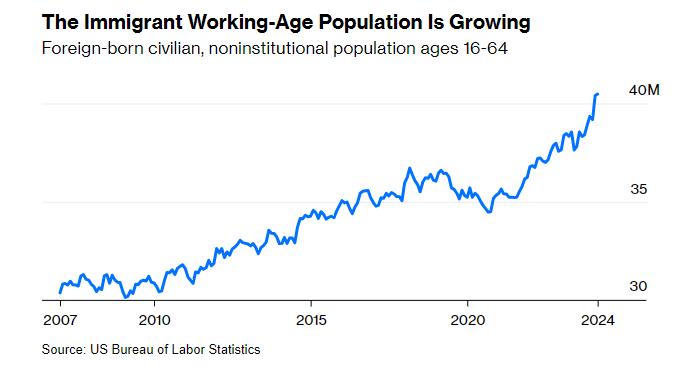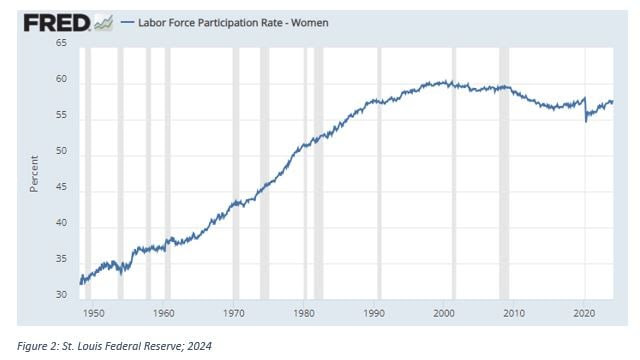There’s an old saying in economics: “Demographics are destiny.”
Why?
Because a young and dynamic population is what carries everything – from spending and productivity to workforce and economic growth.
And more importantly, the young working population is needed to subsidize the old retiring generation (aka dependents).
For example, in the U.S., systems like Social Security and Medicare depend on an ample body of young working people to pay into it as older generations get the benefits. Thus, too few young people relative to more elderly can make the system imbalanced and unsustainable.
Worse is that demographics are essentially feedback loops.
Less births means fewer births in the future, and on and on. This also works vice versa (more births beget more births).
Remember, at the end of the day, an economy is a social system. Thus, imbalances in population have ripple effects all over.
Demographics are also structural and long-term cycles – meaning that the Federal Reserve can’t simply cut interest rates to fix it and magically spur births.
And this is something that deeply worries policymakers – because as I noted above – a shrinking workforce paired with an aging population is an ugly recipe.
Now, unfortunately, global demographics – especially for the developed world – look awful as births plunge and retirees are set to happen en-masse.
And while we can look at some of the worst places with these issues – like Canada, China, South Korea, Japan, Germany, etc. – let’s just focus on the U.S., why this trend is happening, and what we can make of it.
The U.S. Fertility Rate Has Been Declining For Decades – And It’s Chronically Low Now
The U.S. has suffered declining fertility (birth) rates for decades now.
For instance – according to the CDC – the number of births per 1,000 women in 1957 was 122.9 births. But now, preliminary data from 2022 shows the fertility rate was less than half this, at 56.1.
And while this downtrend has been a multi-decade one – after the Second World War’s “baby boom” – things have gotten much worse since 2008 (no surprise after the housing market imploded).
For perspective, the fertility rate has decreased by nearly 23% from 2007 to 2022. And the average American woman now only bears around 1.6 children, a notable decrease from the three births recorded in 1950, and much lower than the “replacement rate” of 2.1 children necessary to maintain a stable population.
And while this isn’t a good number, it’s better than other major economies. Italy currently experiences 12 deaths for every seven births. South Korea faces a declining birth rate of 0.81 children per woman. China, having enforced a one-child policy for decades, now suffers from population decline for the first time since the 1960s. And Taiwan’s birth rate stands at 0.87.
This is becoming a serious problem for the U.S. (and the world) as policymakers are banging their heads trying to reverse these trends – especially when there is a tidal wave of people hitting retirement age in the coming decades.
As I’ve shared before – roughly 10,000 to 12,000 U.S. citizens are hitting retirement age per day until 2030. To put this into perspective, in 2020, about 1 in 6 people in the United States were age 65 and over. In 1920, this proportion was less than 1 in 20.
This is becoming very unbalanced as there are simply too many older people compared to younger ones.
In fact, according to Bloomberg, the native-born US population ages 16 through 64 has been flat since 2016 and now declining – coinciding with the overall declining birth rates.
Actually, according to the same data, it’s immigration that’s carrying the working-age population.
Just take a look at the immigrant working-age population in the same 17-year period – it’s risen sharply.

A big advantage the U.S. has compared to the other countries dealing with demographic issues is the fact we have lax immigration. Allowing for more inflows of people to make up for the declining native birth rate.
So, while U.S. politicians have their hands full with immigration debates, it appears, in the end, it may become critical to growing the U.S. working-age population and economy (although with downsides – such as amplifying a housing shortage, inflation from more demand, etc).
Why Are Fertility Rates Plunging? My Thoughts
Now, you may be wondering, “Why is the fertility rate sinking all over?”
There are various theories on this. But one I find the most compelling was from reading economist Robert J. Gordon’s book – “The Rise and Fall of American Growth (2016)” – which was an exhaustive 800-page tome on the history of the U.S. economy since the first industrial revolution (late-1700s).
The gist was that there were four major drivers for this change:
1. As the economy urbanized (moving from rural farmland to cities), families required fewer children to help maintain chores on the land.
2. The child mortality rate has declined steadily over the last 220-plus years – from 462 per 1000 births in 1800 to just 7 in 2020. Meaning women needed to have fewer children without worry of some passing away.
3. The introduction of social safety nets sponsored by the state (such as Medicare or Social Security or pensions). These programs meant parents didn’t need to depend on having more kids to subsidize and care for them during their retirement.
4. The rising cost of living. This is probably one of the more important ones as families may find it easier to pay for one or two children than three or four. Simply put, having more kids is extremely expensive (according to the USDA, the average cost of raising a child is $233,610 as of 2017, and this doesn’t include college).
Another factor to consider is the change in the family dynamic – specifically with women entering the workforce in droves post World War Two.
Take a look at the following chart showing the labor force participation rate for women since the 1950s – rising from 33.4% to 57.6% as of March 2024.
As women began focusing more on careers, it essentially meant less time to focus on children (an opportunity cost).
Every individual and family may have their reasons for reducing the number of children they have. But the main points here worth highlighting are the structural issues. And these are not something that can be reversed easily. (Believe me, governments around the world have tried – from patriotic calls to duty and doling out cash to love cruises and investment into public daycare).
Wrapping It Up
Demographics are a problem plaguing the developed world – and while the U.S. isn’t in as bad a position as other major economies, it’s still suffering.
Lawmakers and commentators are alarmed by the decline, as headlines caution about an impending “demographic crisis” or “Great People Shortage”. Because economies are facing a shortage of young workers to fill jobs and contribute taxes and social programs that subsidize the old.
And unfortunately, history suggests that regardless of governmental efforts to reverse this, global fertility rates continue to decline.
This will have big implications for global growth, immigration policies, government balance sheets, and the structure of the world economy.
Because if demographics are in fact destiny, things look pretty bleak
